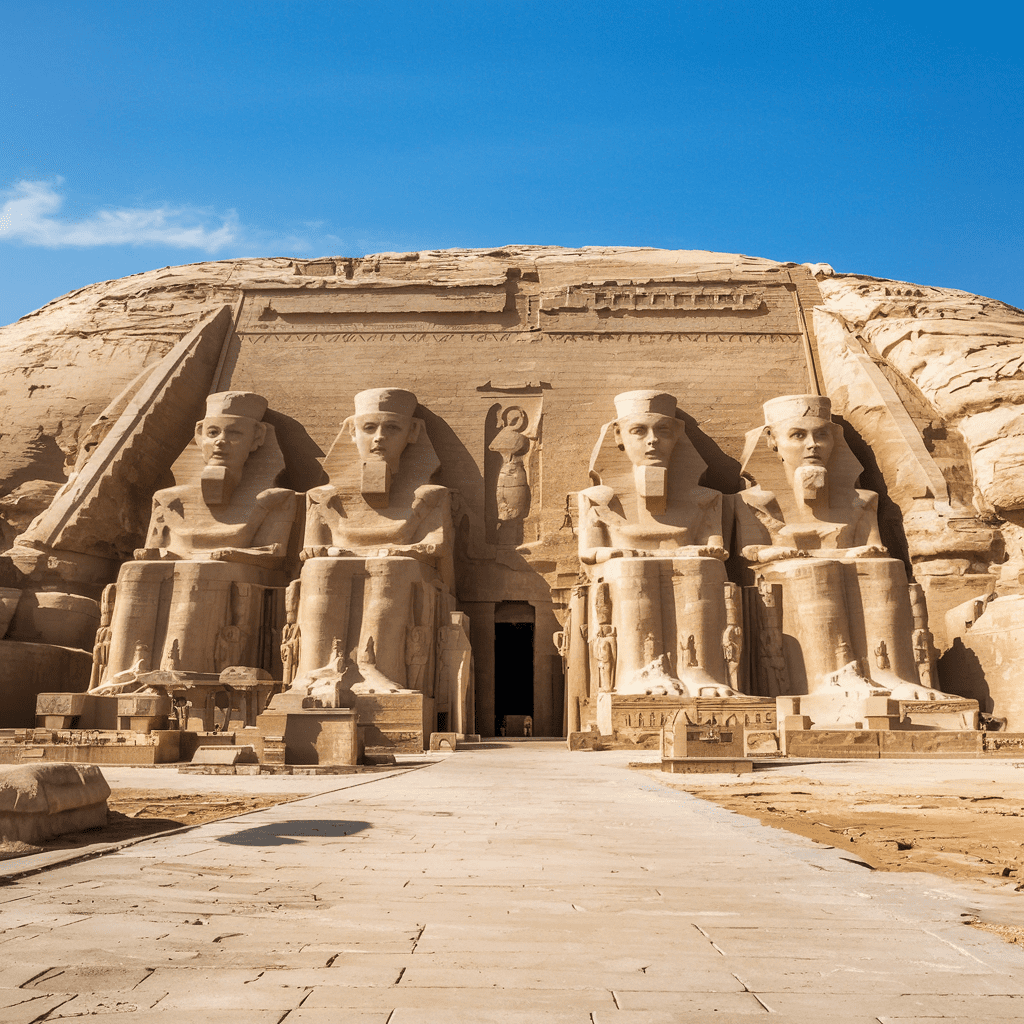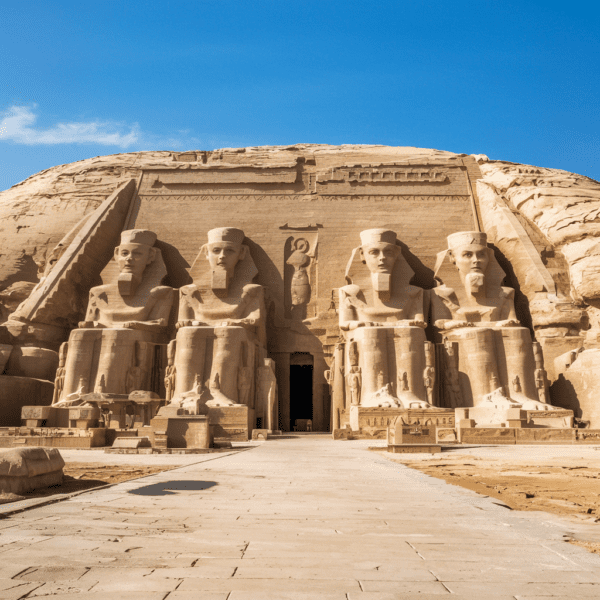

Facts About Abu Simbel
Facts About Abu Simbel: A Marvel of Ancient Egypt
Abu Simbel, one of the most awe-inspiring archaeological sites in Egypt, showcases the grandeur and ingenuity of ancient Egyptian civilization. Located in southern Egypt near the border with Sudan, Abu Simbel consists of two massive rock temples carved out of the mountainside during the reign of Pharaoh Ramses II. In this blog post, we will explore fascinating facts about Abu Simbel, making it easy to understand and appreciate this incredible site.
The History of Abu Simbel
Construction by Ramses II
Pharaoh Ramses II constructed Abu Simbel in the 13th century BCE. The construction of the temples took about 20 years and finished around 1244 BCE. Ramses II built these temples to demonstrate his power and divine nature and to commemorate his victory at the Battle of Kadesh.
The Relocation
One of the most remarkable facts about Abu Simbel involves its relocation. In the 1960s, the construction of the Aswan High Dam threatened to submerge the temples under the rising waters of Lake Nasser. An international effort led by UNESCO successfully relocated the temples to higher ground, about 65 meters above their original site. Engineers cut the temples into large blocks, moved them, and reassembled them with great precision.
The Great Temple of Ramses II
The Facade
The Great Temple, dedicated to Ramses II himself and the gods Amun, Ra-Horakhty, and Ptah, features colossal statues of Ramses II. The facade includes four seated statues of the pharaoh, each about 20 meters high, flanking the entrance. These statues symbolize Ramses II’s might and divine status.
The Interior
Inside the Great Temple, visitors find a series of halls and rooms adorned with intricate carvings and hieroglyphics. The walls depict scenes of Ramses II’s military campaigns, religious rituals, and interactions with the gods. One of the most remarkable facts about Abu Simbel is the sanctum, where statues of Ramses II and the gods Amun, Ra-Horakhty, and Ptah sit. Twice a year, on February 22 and October 22, the rising sun illuminates the statues, showcasing the ancient Egyptians’ advanced understanding of astronomy.
The Small Temple of Hathor and Nefertari
Dedicated to the Queen
The smaller temple at Abu Simbel is dedicated to Hathor, the goddess of love and beauty, and Nefertari, the beloved wife of Ramses II. This temple is unique because it is one of the few in Egypt dedicated to a queen. The facade features six statues, four of Ramses II and two of Nefertari, each standing about 10 meters tall.
The Interior
The interior of the Small Temple impresses visitors with beautifully decorated walls depicting scenes of Nefertari making offerings to the gods and participating in rituals. The temple’s sanctum contains statues of Hathor and other deities, emphasizing the queen’s divine association and importance.
The Significance of Abu Simbel
Symbol of Power
Abu Simbel’s design aimed to impress and intimidate both the local population and Egypt’s southern neighbors. The colossal statues and grand architecture served as a powerful reminder of Ramses II’s strength and divine authority. The temples also reinforced the pharaoh’s image as a warrior-king and a god on earth.
Architectural Marvel
The construction and relocation of Abu Simbel showcase the ingenuity and skill of both ancient and modern engineers. The precise alignment of the temples with the sun, the intricate carvings, and the successful relocation project all highlight remarkable human achievements.
Visiting Abu Simbel Today
How to Get There
Abu Simbel is accessible by air, road, or boat. Many visitors opt for a short flight from Aswan, which takes about 45 minutes. Alternatively, daily bus tours and private car hires offer a scenic drive through the desert. Some travelers choose to visit Abu Simbel as part of a Nile cruise, providing a unique perspective of the region.
What to Expect
Visitors to Abu Simbel can explore both the Great Temple and the Small Temple, marveling at the colossal statues, detailed carvings, and the impressive engineering behind both the original construction and the relocation. The site also includes a visitor center with exhibits and information about the history and significance of the temples.
Conclusion
Abu Simbel stands as a monumental achievement of ancient Egyptian civilization and a symbol of human ingenuity. From its construction by Ramses II to its relocation in the 20th century, the site continues to captivate and inspire visitors from around the world. Whether you are fascinated by history, architecture, or the sheer scale of human endeavor, a visit to Abu Simbel
offers an unforgettable experience and a deep connection to Egypt’s rich cultural heritage.
Recent Posts
Edfu Temple :5 Reasons to Explore the Majestic Today
Discover 7 Amazing Features of Sinbad Hotel Egypt for 2024
Top 7 Reasons to choose Egypt Air Hospital in Egypt
All Categories
Tags


Thailand







